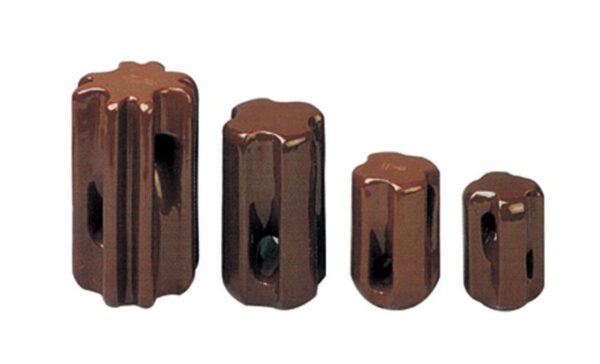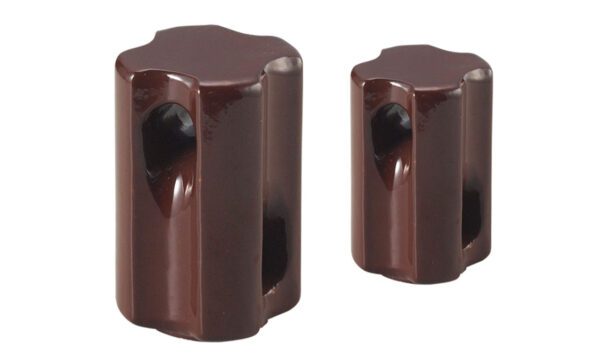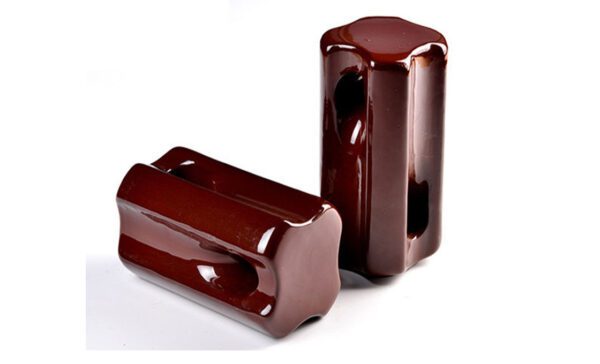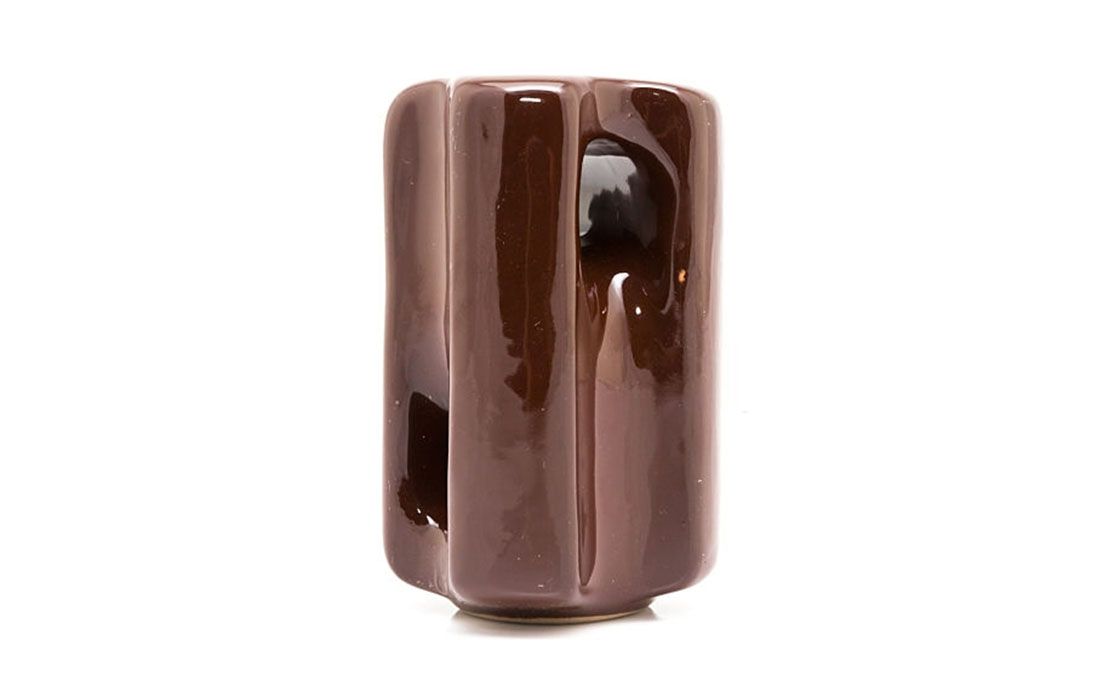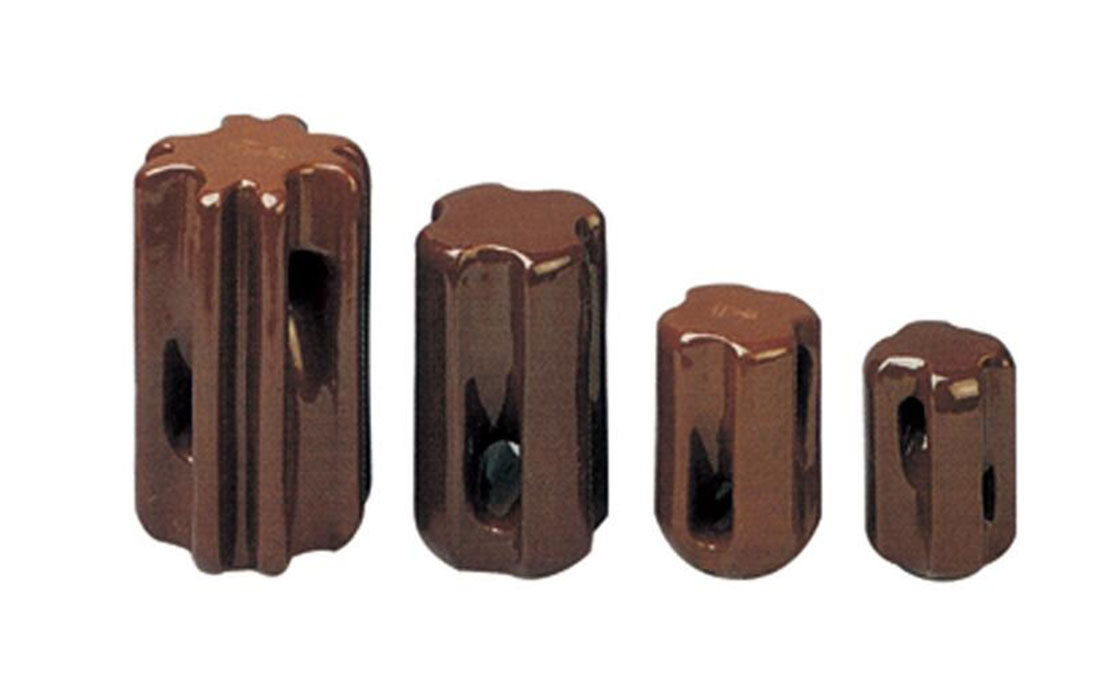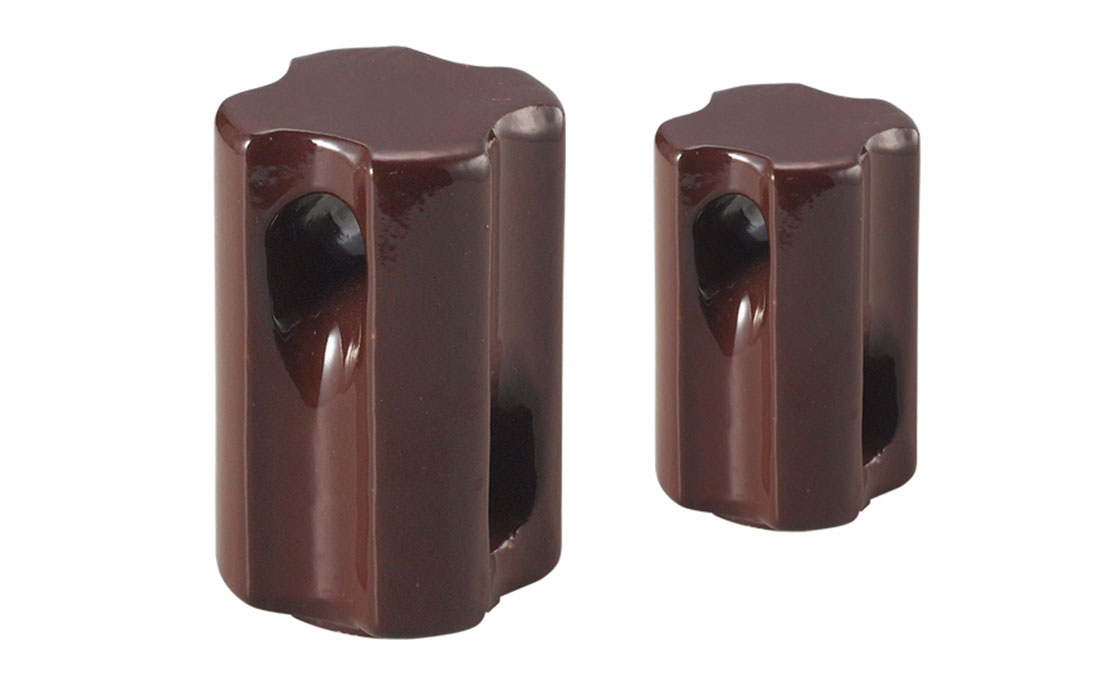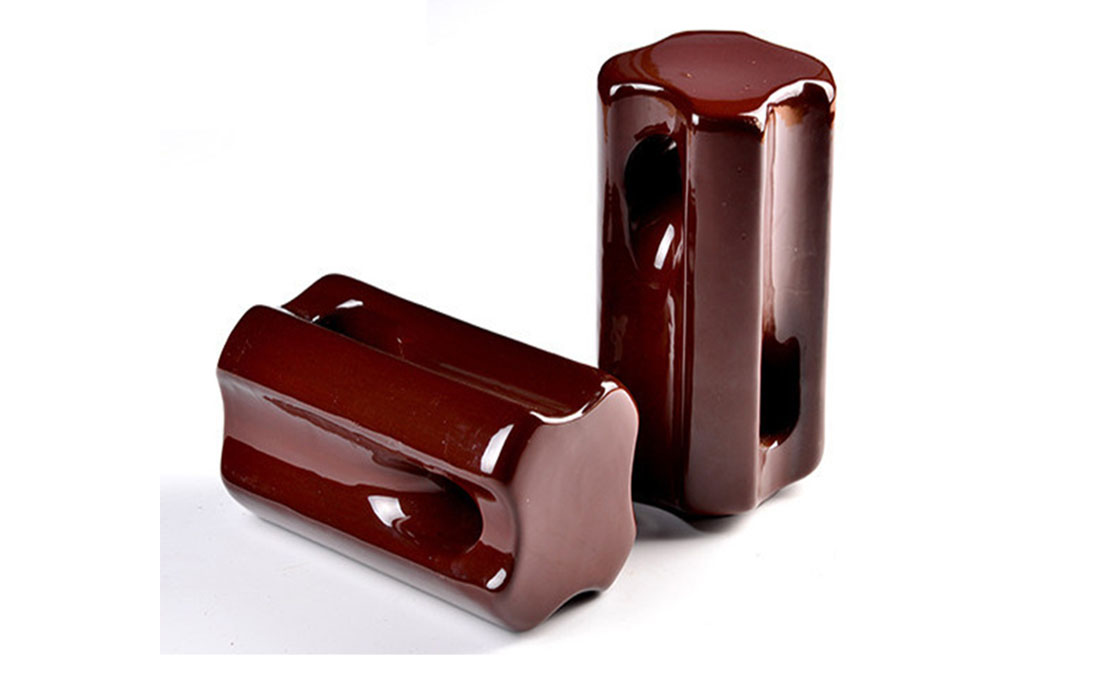Stay Insulator
- Description
- Specification
Description
Stay insulator is a type of low voltage insulator designed to fasten and counterweight the dead end pole by connecting with a stay wire or guy grip, it is also called stay type insulator or egg insulator.
To avoid the dead end pole or terminal pole fall down, it should select the suitable types of stay insulators and pole line fittings. QUAN PHAM stay insulators have the function to avoid the electric conduction on the stay wire by accident.
How does a stay insulator function?
There are two holes in the stay insulator body. The 2 pieces guy grips go through the hole in the opposite direction. The guy grip will wrap the stay wire to furnish the connection.
The connection way isn’t confirmed. For different markets, there are different ways to connect. As an insulator manufacturer and supplier, we also can design the insulator fittings based on the customers’ designs and drawings.
Table of Contents
Stay Insulator: The Ultimate Guide
 There are different types of insulators for overhead powerlines. All of them are used for different but related functions. As you know, the basic function of an insulator is to prevent the flow of electric current areas to areas that it is not supposed to go. In short, insulators prevent the unwanted flow of electric current.
There are different types of insulators for overhead powerlines. All of them are used for different but related functions. As you know, the basic function of an insulator is to prevent the flow of electric current areas to areas that it is not supposed to go. In short, insulators prevent the unwanted flow of electric current.
In a typical transmission line, the overhead conductors are supported by poles and towers. Insulators are positioned between the poles to prevent the current from flowing to the earth.
The main types of insulators used on overhead powerlines are:
-Pin insulator
-Stay insulator
-Suspension insulator
-Strain insulator
-Shackle insulator
Types of insulators play different roles on an overhead powerline system
In this article, our focus will be on the stay insulators for a transmission line. Are you planning to buy them? This guide will be very useful to you.
What is a Stay Insulator?
A stay insulator is a type of insulator that is used on the stay wires. They are designed to provide insulation in case the wire breaks and falls on the ground. The stay insulator will ensure that the wires don’t touch the ground.
The importance of stay type insulator is usually witnessed when the poles fall on the ground or when the stay wires accidentally break due to excess mechanical load.
It is among the most important overhead transmission line insulators that you must install.
Normally, stay-type insulators are installed in the middle of the stay wires.
In the case of the pole breaks, the insulator will ensure that the lower portion of the conductor will have no voltage.
How Does a Stay Insulator Work?
A typical stay insulator has two holes that are positioned on opposite sides of each other.
Pieces of stay wires get in through one hole and exit through the other hole.
Guy wires are used to provide the grip and ensure that there is a perfect connection between the stay wire and the stay insulator.
So, what happens when the stay wires find themselves on the ground? Let’s say the pole or tower breaks and everything goes down.
The wires will be fully insulated and No voltage will go to the ground.
Stay Insulator Material
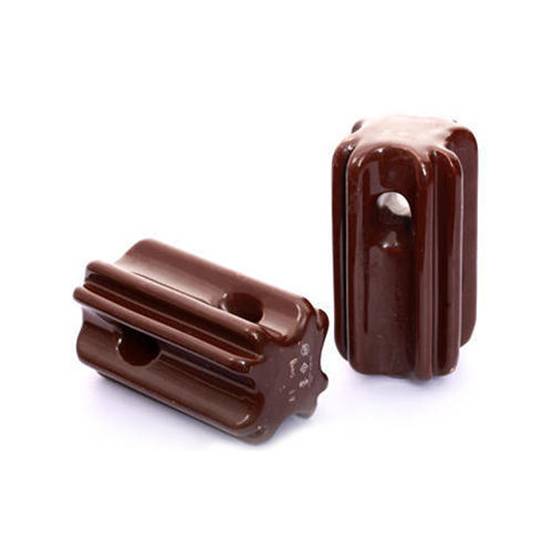
What are stay insulators made of?
Porcelain is the main material that is used to make stay insulators for overhead transmission lines.
Porcelain is preferred because it has desirable physical and chemical properties.
-
Why is porcelain used for stay Insulators?
Obviously, there are other materials that can be used to make stay insulators.
So, what makes most insulator manufacturers use porcelain?
Here are the top reasons:
-Porcelain has physical and mechanical strength: Basically, porcelain material is mechanically strong to handle the weight and tension of the conductors.
Its immense physical strength also means that it can withstand various vagaries of nature.
-Porcelain has high insulation resistance: A good insulator should provide adequate resistance to electricity. This property means that there will be no leakage of the electric current to the earth.
-Porcelain has high dielectric strength: With high dielectric strength, a porcelain insulator will be able to high voltage load and voltage stress.
-Porcelain is imporous. Given that a stay insulator is located outside, it is likely to be exposed to water and other unwanted fluids. Porcelain is not porous hence no fluid can get inside it to interfere with the flow of current.
Gases and fluids cannot find an easy way into the porcelain.
-Resistance to temperature change: The physical and electrical properties of porcelain material are not affected by the extreme temperature variation.
This is because high temperatures can affect the electrical conductivity of a material.
This property means that a porcelain stay insulator can work anywhere regardless of environmental and climatic factors.
-Porcelain is non-reactive to chemicals: The physical properties of a porcelain stay insulator prevent it from easily reacting with chemicals and other impurities.
This is important because some impurities can affect the conductivity of a material leading to the leakage of electric current.
In addition to the above properties, the stay insulators are properly glazed to prevent any traces of water from forming on the surface of the insulator.
So, how can I tell about the type and property of the material used to stay insulators?
In most cases, stay insulator manufacturers usually indicate the specifications of the material.
They can indicate the dielectric and comprehensive strength of the material. The manufacturer will also indicate the tensile strength of the insulating material.
Stay Insulator Price
 Just like shackle insulators and other types of insulators, it is important to know the price of stay insulators.
Just like shackle insulators and other types of insulators, it is important to know the price of stay insulators.
The cost of stay insulators depends on various factors and among them are the physical, mechanical, and electrical properties of the insulator.
The dielectric, compressive, and tensile strength values will determine how much you will pay for the stay insulators.
Stay insulators are also labeled depending on their voltage.
You can buy 11 KV stay, 15 KV stay or even 36 KV stay.
Obviously, the capacity of the stay insulator will determine the total amount that you will pay.
To know the exact price of the stay insulator, take a step to contact a reliable stay insulator manufacturer.
Reliable Stay Insulator Manufacturer

So, where can I buy high quality stay insulators?
The surest way is from a reliable stay insulator manufacturer in Vietnam.
The manufacturer and supplier should have adequate resources and capacity to supply the best stay insulators for overhead lines.
You should also check to see what other people are saying about the insulators from a particular manufacturer. This is possible by reading stay insulator reviews.
What if I want the specifications of the insulators to suit my stay wires?
You simply need to tell the manufacturer and they will design custom insulator fittings based on your designs and drawings.
Why lots of customers choose QUAN PHAM?
- QUAN PHAM stay insulator is made from porcelain which is sound thoroughly vitrified.
- QUAN PHAM stay insulators are free from defects and blemishes. The defects will affect the lifetime of the insulator, so QUAN PHAM QC team will inspect it.
- The process of making a stay insulator is by wet treatment on the porcelain. There should be non-porous with high fusion points during the production.
- QUAN PHAM stay insulator surface is smooth and uniform. The surface of the porcelain is free from irregularities and any rough particles.
Frequently Asked Questions (FAQs)
What is a stay insulator?
A stay insulator is a type of low voltage insulator designed to fasten and counterweight the dead-end pole by connecting with a stay wire or guy grip, it is also called a stay type insulator or egg insulator.
How to use a stay insulator?
There are two holes in the stay insulator body. The 2 pieces guy grips go through the hole in the opposite direction. The guy grip will wrap the stay wire to furnish the connection.
The connection way isn’t confirmed. For different markets there are different ways to connect, the insulator fittings can be designed based on the customers’ design and drawings.
How much is a stay insulator?
The cost of stay insulators depends on various factors and among them are the physical, mechanical, and electrical properties of the insulator.
Obviously, Stay insulators are also labeled depending on their voltage, the capacity of the stay insulator will determine the total amount that you will pay.
To know the exact price of the stay insulator, take a step to contact a reliable stay insulator manufacturer.
How to choose the reliable stay insulator manufacturers?
The manufacturer and supplier should have adequate resources and capacity to supply the best stay insulators for overhead lines.
Checking what other people are saying about the insulators from a particular manufacturer. This is possible by reading stay insulator reviews.
Stay Insulator
According to the voltage, there are 11kv stay insulators and 33kv stay insulator 11kv stay insulator is used on the 11kv overhead line network in the power system. Rax Industry stay insulator is used to connect the stay wire or guy wire.
Rax Industry stay insulator is made of glazed porcelain according to BS137 and suitable for operation outdoors. The working condition for the 11kv stay insulator is as below :
Normal system voltage 11kv
System highest voltage 12.5kv
50 cycles dry flash over 40kv
50 cycles wet flash over 22kv
Leakage distance 80mm
Tensile strength 90kn
| Cat No. | AS Class | Fig | Wet power frequency Withstand VoltageKV | Stand or Wire rope diaMm | Mechanical failing loadKN |
| GY-1 | J-2.7 | 1 | 10 | 7/2.75 | 27 |
| GY-2 | J-7 | 2 | 15 | 19/2.00 | 71 |
| GY-3 | J-16 | 3 | 20 | 19/2.75 | 222 |
| GY-4 | J-16B | 4 | 30 | 19/2.75 | 222 |
AS STANDARD
| Cat No. | Fig | Main dimensionmm | LeakageDistance
mm |
MechanicalFailing load
KN |
Low-frequencyvoltage | WeightKg | ||||||
| A | B | C | D | E | F | DryKV | WetKV | |||||
| 11.1354 | 1 | 78 | 35 | 25 | 44 | 14 | 32 | 18 | 25 | 12 | ||
| 11.1075 | 1 | 95 | 57 | 37 | 50 | 19 | 48 | 45 | 45 | 15 | ||
| 11.0522 | 1 | 136 | 85 | 60 | 62 | 19 | 63 | 110 | 110 | 18 | 2 | |
| 11.0521 | 1 | 190 | 85 | 60 | 72 | 25 | 63 | 110 | 110 | 23 | 4.9 | |
| PS10 | 2 | 59 | 35 | 25.5 | 39.5 | 8 | 6.5 | 15.1 | ||||
| PS9/3 | 2 | 60 | 26 | 25.5 | 38 | 8 | 6.5 | 20.6 | ||||
| NEF-2-60 | 2 | 60 | 28 | 25.5 | 38 | 10 | 6.5 | |||||
| NEF-2-58 | 2 | 58 | 24 | 23 | 37 | 8 | 6 | |||||
| 40*55 | 2 | 55 | 27 | 22.5 | 40 | 12 | 8 | |||||
SA STANDARD


